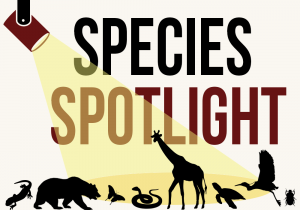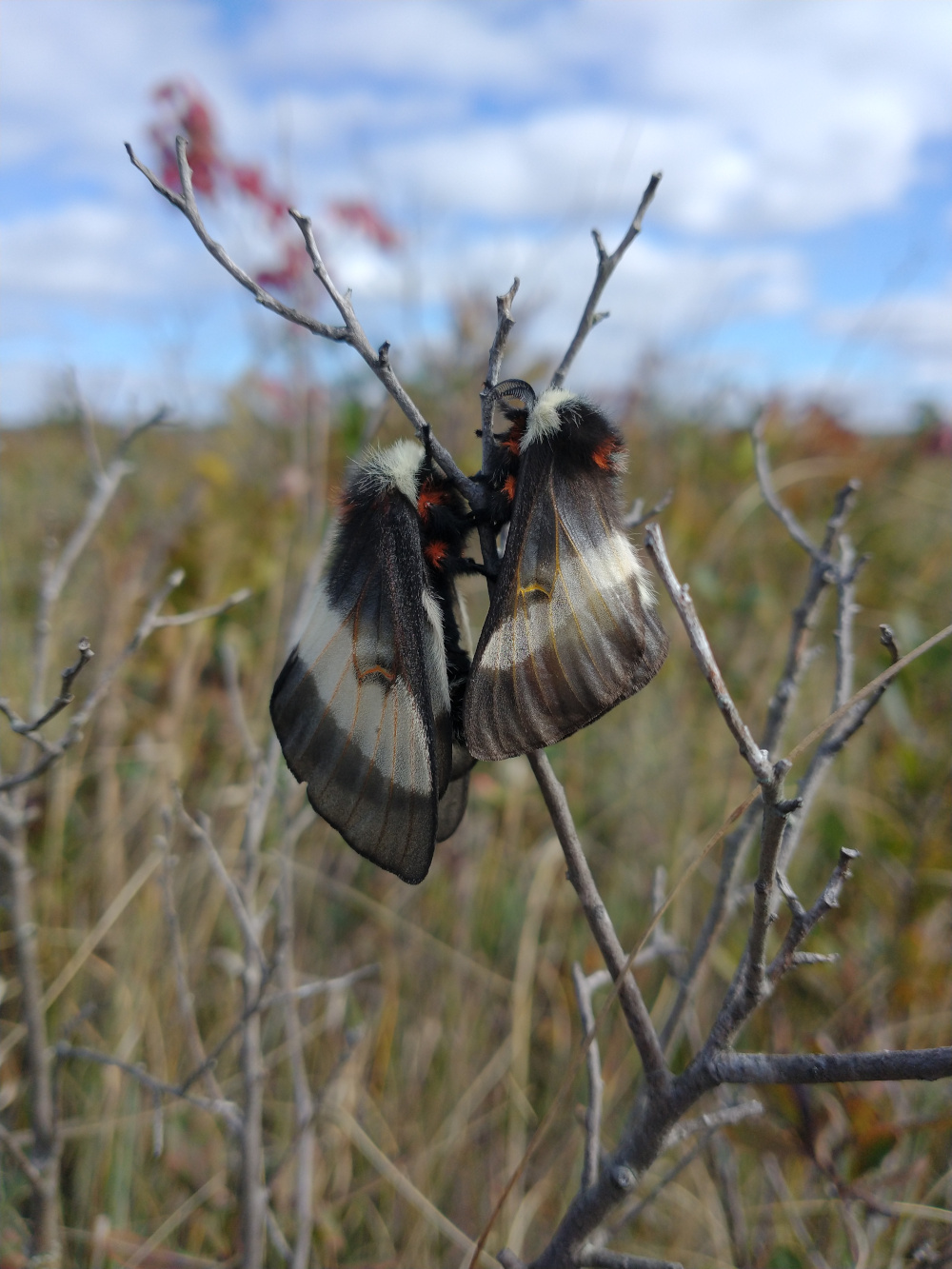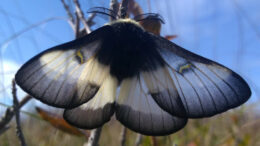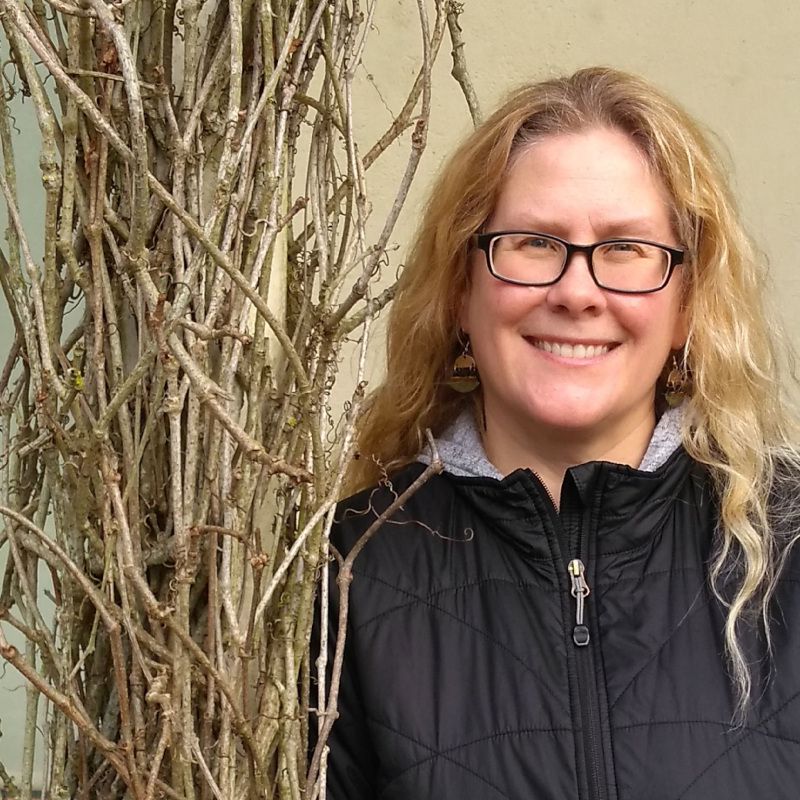 The bog buck moth, a member of the silk moth family Saturniidae, is known from just a handful of sites around the North American Great Lakes. Unlike its close relatives, it lives in peatlands where its larvae feed on a wetland plant, Menyanthes trifoliata. Thanks to the difficulty of access to its boggy habitat, it was “discovered” only quite recently, in 1977, in central New York. Menyanthes-feeding buck moths were subsequently found in several additional sites in New York, as well as in Ontario and Wisconsin. Most populations have declined since their discovery, and several have disappeared.
The bog buck moth, a member of the silk moth family Saturniidae, is known from just a handful of sites around the North American Great Lakes. Unlike its close relatives, it lives in peatlands where its larvae feed on a wetland plant, Menyanthes trifoliata. Thanks to the difficulty of access to its boggy habitat, it was “discovered” only quite recently, in 1977, in central New York. Menyanthes-feeding buck moths were subsequently found in several additional sites in New York, as well as in Ontario and Wisconsin. Most populations have declined since their discovery, and several have disappeared.
Bog buck moths have been listed as endangered in New York since 1999 and Canada since 2009. In April 2023 they were placed on the U.S. endangered species list. Although the species had been a candidate for U.S. listing since the early 1990s, lack of information on its biology and uncertainty surrounding its taxonomy led to delays in its consideration.
Species name:
That’s a good question — one that has engendered a great deal of debate and confusion. For decades the bog buck moth was considered an ecological subtype of either Hemileuca maia or H. nevadensis, distinguished from other populations by the peatland habitat and ability to consume Menyanthes, but with no clear morphological separation. Recent genetic analyses have confirmed its position as a distinct lineage among the H. maia populations of the northeastern United States.
In 2020 two new names were proposed: as a subspecies (H. maia menyanthevora) and as a separate species (H. iroquois). These names were proposed nearly simultaneously, in unconventional publications, and left open some questions as to which populations should be included. The U.S. Fish and Wildlife Service is currently using the menyanthevora subspecies designation, and limiting it to the New York and Ontario populations, in framing its endangered listing and recovery plans.
Description:
This is a large day-flying moth, with striking black and white bands on its wings and reddish-orange marks on its body. The larvae are dark brown to black, with red and yellow spots, and they bear irritating hairs and spines that increase in size and noxiousness as the larvae reach their sixth and final instar (phase).

The bog buck moth has several fascinating, unusual behaviors adapting it to the wetland habitat. Its oviposition (egg-laying) behavior is remarkable. Typical moths, including other H. maia, lay eggs on the food plant their larvae will eat, but bog buck moths oviposit not on Menyanthes plants but rather on various other plants in their vicinity. This is necessary because the eggs are laid in the fall and hatch in spring, and Menyanthes plants die back to their underwater rhizomes over the winter. The eggs are laid in clusters of 100-200; the larvae hatch simultaneously and move out en masse to seek Menyanthes. The group sizes become smaller as the larvae grow larger. A single Menyanthes shoot cannot support the complete growth of a bog buck moth, and so the caterpillars face the considerable challenge, throughout their development, of working their way through a mostly inundated habitat to find food. They cannot swim.
Where it’s found:
Menyanthes-feeding H. maia populations have been discovered in two fens in Wisconsin, six in New York, and two in Ontario. The Wisconsin populations are now considered a separate lineage — having perhaps independently colonized the fen habitat — and thus are not included in the U.S. endangered species listing. Of the others, only the two sites in Ontario and one in New York are currently occupied, the other New York populations having vanished over the past 30 years. The sites themselves are small, with each population typically occupying a few hundred square meters of suitable habitat. The density of moths at a healthy site can be astonishingly high, however, for short periods of time, with thousands of larvae crowding the Menyanthes patches for a few weeks in the spring, and hundreds of adult moths visible at once during the fall mating flight in late September into early October.
Major threats:
Presumably the bog buck moth was once fairly common in the wetlands surrounding the Great Lakes, but most of this sort of habitat has been destroyed over the past 200 years: drained, filled in, urbanized. At least some of the recently documented extirpations can be largely attributed to ongoing habitat degradation. Menyanthes grows only in very wet parts of a bog and does not tolerate shade, making it sensitive to shifts in water levels and overgrowth by other plants. The quality of the small habitat patches occupied by bog buck moths can be degraded by the changes in the hydrologic cycle caused by nearby road and home construction, alteration of adjacent waterways, and climate change. Pollution, such as fertilizer or septic runoff, has also threatened some sites, as have invasive plants (particularly glossy buckthorn and nonnative cattails) that can quickly alter the fen habitat.
Notable conservation programs or legal protections:
The remaining bog buck moth sites are protected in that access to them is restricted, minimizing direct and immediate threats. However, they’re not isolated from disturbances in the surrounding landscapes and watersheds. Endangered species listings offer frameworks for further protection.
My favorite experience:
Almost no virgin forest remains in central New York, and nearly every patch of land has at least at some point in the past 250 years been used for crops or livestock. The fens in which bog buck moths occur feel like strange tiny islands of undisturbed primordial wilderness amidst this highly altered landscape.
I love visiting these sites. After thrashing and wading through the swampy thickets that surround the fens, I find a footing on the floating peat mat and I am suddenly surrounded by odd carnivorous plants, in a habitat reminiscent of a wilder New York, unpaved and untraveled, no people, pets, or livestock, no visible evidence of their presence. People sounds are relegated to the far distance, and it’s so quiet that I can hear the moths flicker by.
The beauty of the mating flight, with hundreds of black-and-white moths set against the backdrop of fall colors, is a privilege to see, and I hope that it can be preserved.
What else do we need to understand or do to protect this species?
Habitat protection for the remaining occupied sites is critical. Some of the sites from which populations have disappeared appear to still have suitable habitat, so reintroduction from healthy populations is a possibility.
More research on its biology is needed as well. Population studies conducted in New York over the past 25 years have documented dramatic fluctuations, as well as extirpations, but the causes are not clear. While some of the declines have been attributed to habitat succession and degradation, the possible effects of parasites, disease, and changes in rainfall or snowpack as well as other climate-related variables remain uncertain.
Key research:
Cryan, J.F., and R. Dirig. 2020. Moths of the Past: Eastern North American buck moths (Hemileuca, Saturniidae), with notes on their origin, evolution, and biogeography. Pine Bush Historic Preservation Project Occasional Publication No. 2. 44 pp.
Dupuis, J.R., S.M. Geib, C. Schmidt, and D. Rubinoff. 2020. Genomic-wide sequencing reveals remarkable connection between widely disjunct populations of the internationally threatened bog buck moth. Insect Conservation and Diversity 13: 495-500. https://doi.org/10.1111/icad.12432
Do you live in or near a threatened habitat or community, or have you worked to study or protect endangered wildlife? You’re invited to share your stories in our ongoing features, Protect This Place and Species Spotlight.
![]()


